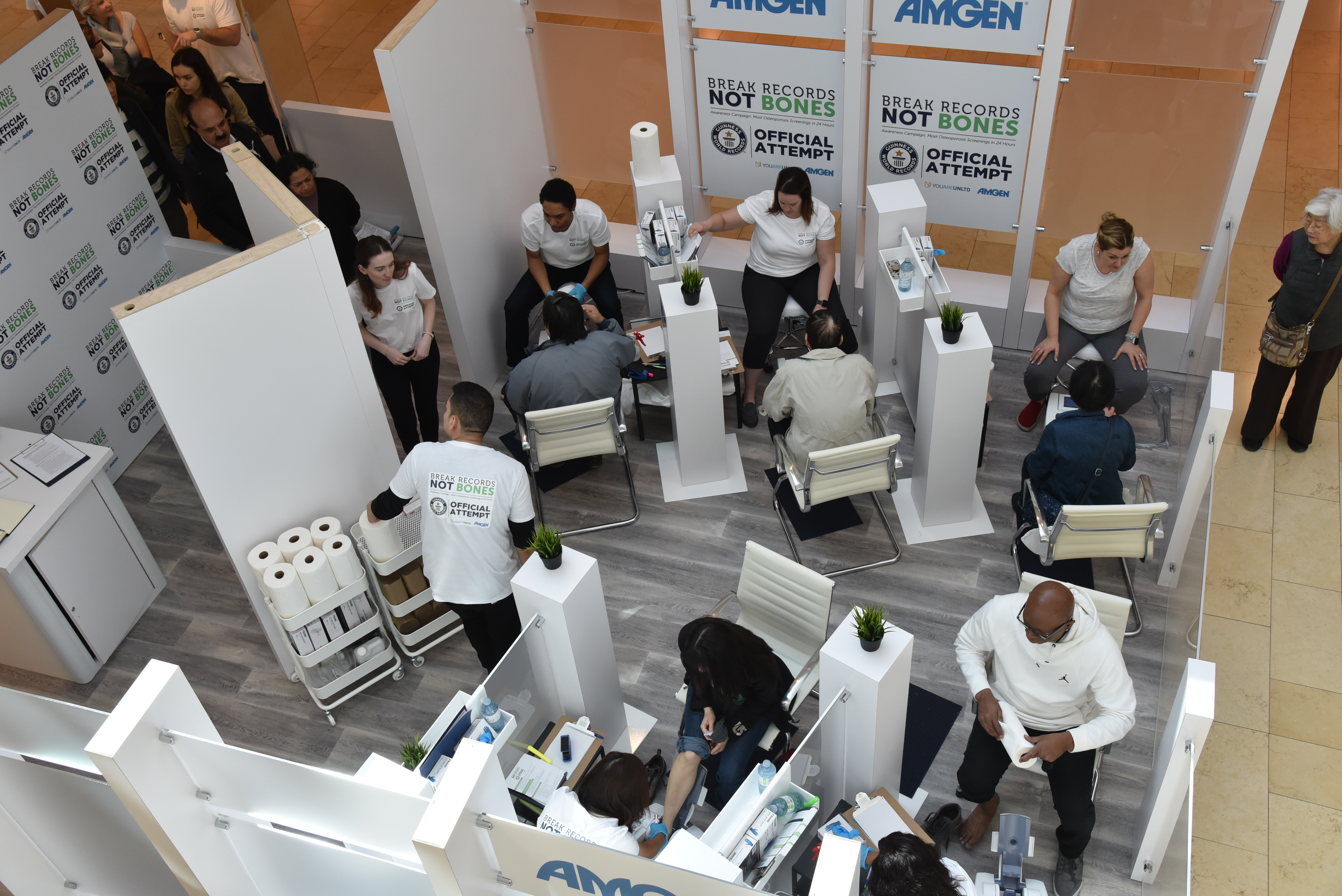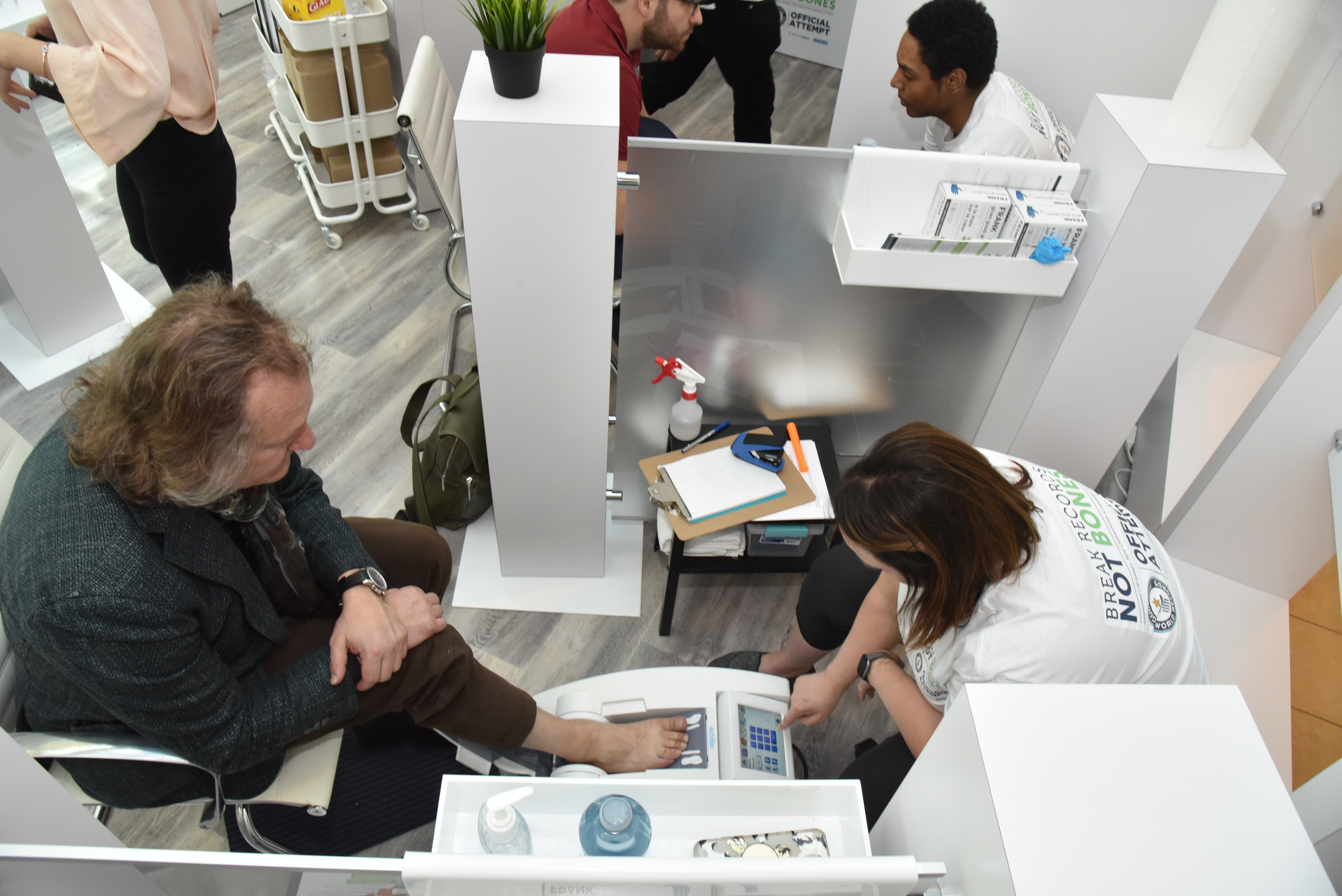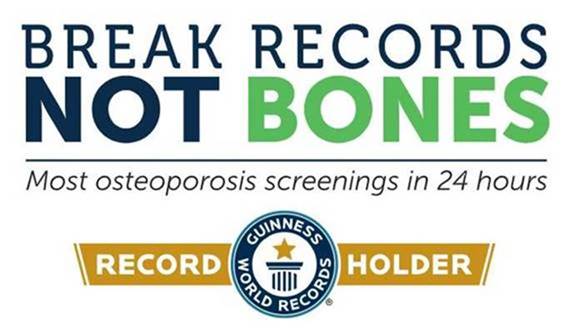
Pictured left to right: Ponda Motsepe-Ditshego, Executive Medical Director, Amgen Canada, Michael Empric, Guinness World Records Adjudicator, Francesco Di Marco, VP and General Manager, Amgen Canada and Robert Argiropoulos, Executive Director, Amgen.
On May 5th, 2019, Amgen Canada, located in Mississauga, Ontario, was one of nine Amgen affiliates working together around the world to successfully set the Guinness World Records title for the most osteoporosis screenings completed in 24 hours.
Amgen, one of the world’s leading biotechnology companies, hosted the Break Records, Not Bones events to help increase awareness of osteoporosis.
As a health professional, I appreciate the importance of an awareness campaign like this. Bone health matters a great deal. That’s why it is so important to help raise awareness among the general public about osteoporosis, and to encourage them to talk to their doctor to learn more.
[youtube url=”https://www.youtube.com/watch?v=pFLUwL2L0W8″ width=”500″ height=”300″]
In Canada, the general public was invited to attend the event, learn more about osteoporosis and participate by having their bone density measured. Amgen successfully achieved the Guinness World Records title, screening 553 people in Canada and more than 7,000 participants around the world.
Statistics suggest 2 million Canadians are affected by osteoporosis. In fact, fractures from osteoporosis are more common than heart attack, stroke and breast cancer combined. From 50 years of age, 1 in 3 women and 1 in 5 men will suffer from an osteoporotic fracture in their remaining lifetime and 80 per cent of all fractures in people 50+ are caused by osteoporosis.

Break Records, Not Bones Event
About Osteoporosis
Many women know all too well what to expect during menopause – hot flashes, mood swings and difficulty sleeping. But what they don’t expect after menopause is an increased risk for osteoporosis.
Throughout a woman’s life, estrogen plays an important role in replacing older porous bone with newer denser bone. However, during menopause, the body starts to produce less estrogen. Over time this can lead to osteoporosis—a disease that weakens bones and makes them more likely to break.
Osteoporosis is often called a “silent” disease, because bone loss can’t be seen or felt. As a result, many people don’t know they have it until they break a bone.
Both men and women can begin to slowly lose bone in their mid 30s, and the bone loss typically accelerates with increasing age. Due to the increased bone loss with increasing age, the burden of osteoporosis particularly affects women and men over age 50. In women, bone loss typically accelerates quite significantly at the onset of menopause, making women more likely to be affected by osteoporosis than men.
Even though someone is feeling great on the outside, their bones could be telling a different story on the inside. If ignored, osteoporosis can jeopardize a person’s ability to do things they love and get around on their own. That’s because bone breaks due to osteoporosis can occur in critical parts of the body, including the hip, pelvis and spine. And once a bone is broken due to osteoporosis, a person is much more likely to break another bone within their lifetime.

Break Records, Not Bones Event
Even what seems like a minor fracture, such as one in the wrist, can be a sign of more debilitating fractures to come— like those in the hip or spine. It’s not just a fracture, it’s a warning sign. No fracture should be ignored; instead, talk to your doctor about osteoporosis, and how you can take charge of your bone health.
According to the Public Health Agency of Canada, it’s possible to prevent, delay or reduce bone loss through a healthy lifestyle. The agency’s website suggests that basic bone health for all individuals includes regular weight bearing and resistance type exercise as well as adequate vitamin and mineral intake.
By: Dr. Ponda Motsepe-Ditshego, Executive Medical Director, Amgen Canada
